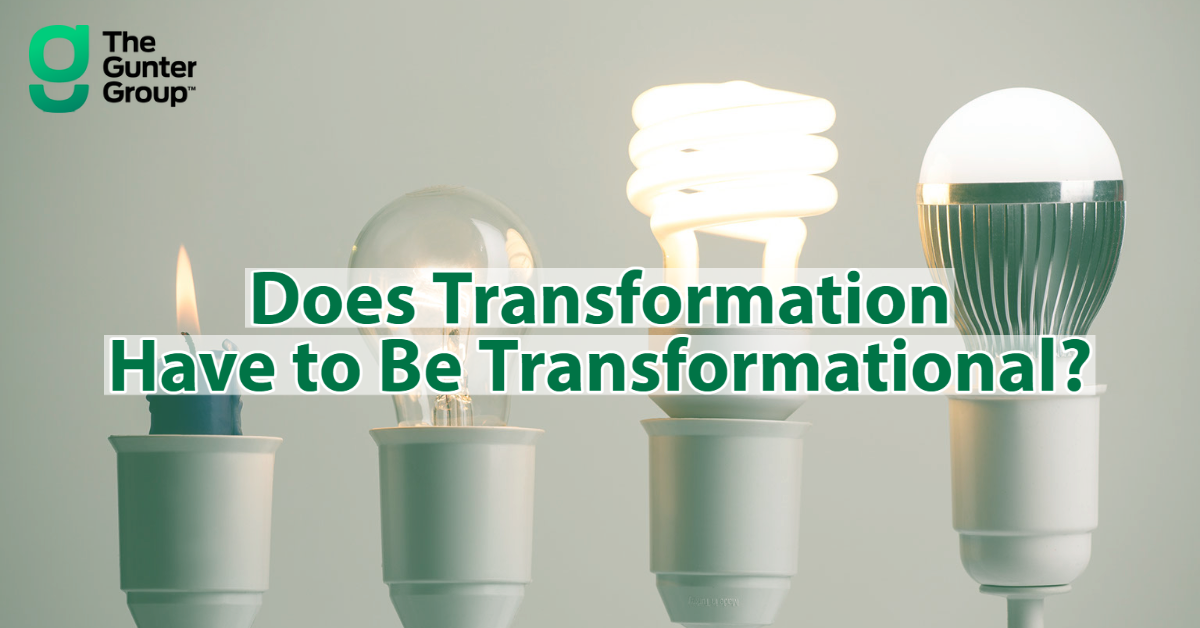DOES TRANSFORMATION HAVE TO BE TRANSFORMATIONAL?

TGG Senior Consultant, Danny Quarrell recently supported a large client partner with a key Transformation initiative. Below Danny shares details and insights on how a mix of enablement projects alongside game changing Transformational projects are key to a healthy Actuarial Transformation Program.
Does transformation have to be transformational?
The biggest ongoing question in my first actuarial transformation program engagement seems like a trick question. Of course, it’s supposed to be transformational! It’s literally called The Actuarial Transformation Program.
Well not so fast my friend!
Rather than looking at an Actuarial Transformation (AT) program as a group of transformational projects, it should be viewed as a spectrum of projects that have a range of transformational outcomes. The end goal is transformation, of course, but each project contributes to that goal in different ways.
The projects that have the least transformative impact can often be the most overlooked and under prioritized projects in the program. Yet these types of projects are worthwhile (and even required) activities that create an opportunity for transformation where there previously wasn’t one and work to keep your community engaged. We refer to these types of projects as transformation enablers.
Transformation enabler projects will typically share these characteristics.
1. They free up time
2. They reduce risk
3. They are an iterative step on a path to a transformational solution
4. They keep the actuarial community engaged in the program
5. They build trust with the broader organization that leadership is actually committed to seeing a transformation through to actual transformative results
Before we get too far into our discussion, let’s be clear on what an example of a transformational project would be. Let’s say you have multiple groups of actuaries that rely on the same modeling calculation platform, but each team prepares their data (inforce data, assumption data, etc.) in their own way for ingestion into the platform and they each have different ways of storing outputs. Maybe one group relies heavily on Excel, another uses R and SQL, and maybe a third group uses MS Access. A transformational project might look like:
Building an enterprise-wide application that would allow each team to manage their inforce data, set assumptions and initiate model runs through a common interface and process. The application would also manage model results and provide robust tools for governance, controls, and auditing.
I think most people would agree that kind of project would be very transformational within an actuarial organization. It would reduce the time needed to prepare data and create the ability to produce multiple model runs in a shorter time frame, reduce risk, reduce ramp up time for actuaries rotating between teams, and streamline the governance process since all models would use the same processes.
Game Changer!
These game changing types of projects are the stuff dreams are made of; they’re also fraught with risk! They take years to implement, have high costs, require incredible levels of trust and engagement from your subject matter experts, and they can sink your program when they go wrong.
These risks are exactly the types of risks transformation enablers are meant to address. Let’s drill down a bit.
· Major transformational projects take years to implement and can easily lose momentum or fail to win the support of the people they are meant to help
Enabler projects can provide shorter term wins, keep the actuarial community excited about the future and help them stay engaged with the program
· Not every team is ready to be transformed, some people are just trying to keep from sinking!
These teams need relief, not transformation. They don’t have the time to stay engaged with the solution that you want to build and release 18 months from now. Give them the relief they need, then engage them on transformation
· Legacy processes are often fragile and have high risk. Process owners don’t want to exacerbate risk with change
Process owners for legacy processes know where their processes are fragile and where the risk lies. Iterative solutions can provide targeted solutions to these key areas. Lowering risk and the stress of owning the process.
· Legacy processes can benefit from being improved iteratively, and stakeholders are more likely to provide valuable feedback when given multiple opportunities via iterative solutions being presented
When you present iterative solutions that start by alleviating key pain points the subject matter experts and key stakeholders are more willing to engage on further improvements and accept greater change to the processes they own. Rather than asking for trust when you promise a big benefit down the road, earn trust by presenting small benefits now.
The actual enablement projects will vary from program to program and team to team, but the characteristics will remain the same.
1. They free up time
2. They reduce risk
3. They are an iterative step on a path to a transformational solution
4. They keep the community engaged in the program
5. They build trust with the broader organization that the leadership is actually committed to seeing a transformation through to actual transformative results.
New organizational initiatives pop up every quarter but the surest way to achieve collective buy-in is to make the real work visible, recognized, and a focused priority. A mix of enablement projects alongside your game changing Transformational projects are key to a healthy Actuarial Transformation Program.
At The Gunter Group our experienced team has decades of experience leading transformational initiatives for client partners. Our versatile team knows change doesn’t happen overnight and are ready to help your organization make transformational progress and achieve transformational results.
